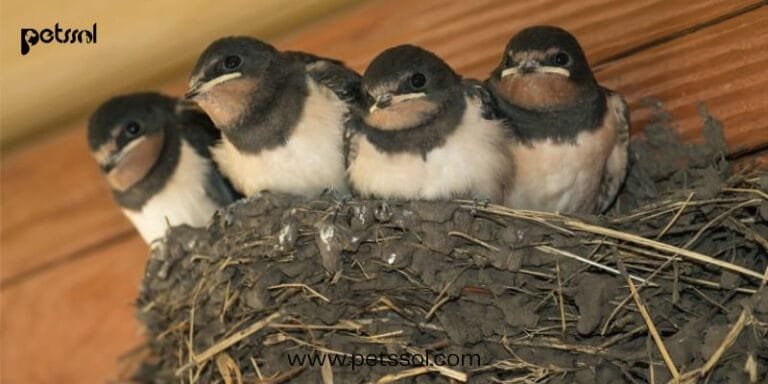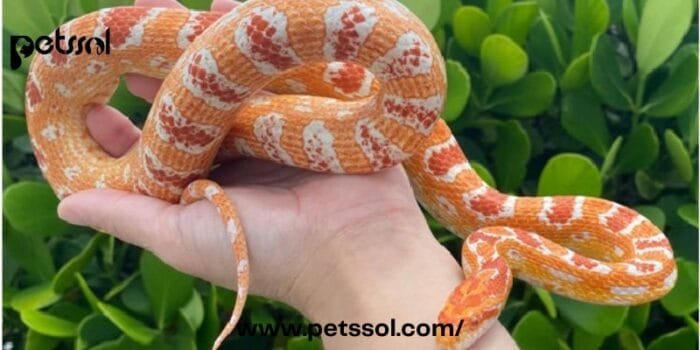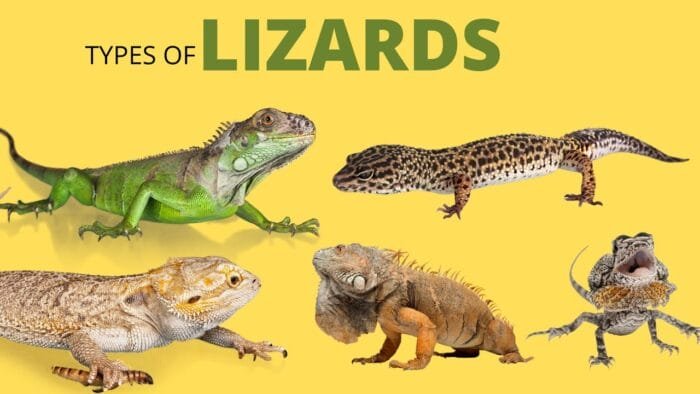What Bird Builds Nest on Side of House? Birds are fascinating creatures, and their nesting habits are a vital part of their life cycle. Some birds, in particular, have a unique tendency to build their nests on the side of houses. This behavior can be intriguing for homeowners who find themselves sharing their living space with these feathered neighbors. In this article, we’ll dive deep into the types of birds that often build nests on the side of houses, why they choose these spots, and what you can do to encourage or discourage them. We’ll also discuss the impact of these nests on your home and provide practical advice on how to coexist peacefully with these birds.
Table of Contents
ToggleBirds That Commonly Build Nests on the Side of Houses
Several bird species are known for their habit of nesting on the sides of houses. These birds are typically attracted to the high, sheltered, and secure locations that homes provide. Let’s take a closer look at some of the most common birds that engage in this behavior.
-
House Sparrow (Passer domesticus)
The house sparrow is one of the most common birds that build nests on the side of houses. These small, adaptable birds thrive in urban and suburban environments. They are known for their ability to nest in small openings, crevices, and eaves, often using materials such as twigs, grasses, and feathers to construct their nests. House sparrows are social birds, and you may find several nests in close proximity to each other on your property.
-
Barn Swallow (Hirundo rustica)
Barn swallows are another bird species known for their nesting habits on the sides of houses. They typically build cup-shaped nests using mud, which they gather from nearby sources. Barn swallows prefer locations that offer some protection from the elements, such as under the eaves of houses or in the corners of porch ceilings. These birds are highly agile flyers and are often seen swooping around open areas as they hunt for insects.
-
House Finch (Haemorhous mexicanus)
House finches are small, colorful birds that are also known to build nests on the sides of houses. They often choose ledges, windowsills, and other small platforms where they can construct their nests. House finches use a variety of materials for their nests, including twigs, grasses, and leaves. These birds are known for their pleasant singing, which can add a delightful soundtrack to your home environment.
-
American Robin (Turdus migratorius)
The American robin is a versatile nest builder and is commonly found nesting on the sides of houses. These birds typically select locations that offer some protection from the weather, such as under eaves or in the crooks of downspouts. American robins build their nests using mud, grasses, and twigs, creating a sturdy structure that can withstand the elements. Their distinctive red breast and melodious song make them a welcome sight for many homeowners.
-
Eastern Phoebe (Sayornis phoebe)
The Eastern phoebe is another bird that may choose the side of a house as a nesting site. These birds are known for their tail-wagging behavior and their preference for nesting on man-made structures. Eastern phoebes often build their nests in sheltered locations, such as under eaves, overhangs, or on window ledges. Their nests are typically made of mud, moss, and grasses, creating a compact and durable structure.
Why Do Birds Choose the Side of a House for Nesting?
Birds are highly resourceful when it comes to choosing nesting sites, and the sides of houses offer several advantages. Let’s explore the key reasons why birds may choose to build their nests on your home.
-
Protection from Predators
One of the primary reasons birds choose the side of a house for nesting is the protection it offers from predators. The height and inaccessibility of these locations make it difficult for ground-based predators, such as cats and raccoons, to reach the nests. Additionally, the solid walls of a house provide a sturdy barrier that can protect the nest from larger birds of prey.
-
Shelter from the Weather
The sides of houses often provide excellent shelter from the weather. Eaves, overhangs, and other architectural features can shield nests from rain, wind, and harsh sunlight. This protection is particularly important during the breeding season, when eggs and young chicks are vulnerable to the elements.
-
Proximity to Food Sources
Birds are more likely to build nests in locations that are close to abundant food sources. The sides of houses often meet this requirement, as they are typically located near gardens, yards, and other areas where birds can find insects, seeds, and other food. The proximity to food allows parent birds to efficiently feed their young without having to travel long distances.
-
Availability of Suitable Nesting Materials
The materials used to construct bird nests can vary depending on the species, but many birds favor locations that offer easy access to suitable nesting materials. Houses often have nearby sources of twigs, grasses, and mud that birds can use to build their nests. In some cases, birds may even incorporate human-made materials, such as string or fabric, into their nests.
-
Mimicking Natural Nesting Sites
For some bird species, the sides of houses can mimic the natural nesting sites they would typically use in the wild. For example, the height and structure of a house may resemble a cliff or tall tree, making it an attractive option for birds that would normally nest in such locations. This is particularly true for species like barn swallows, which are known to nest on cliffs in their natural habitat.

How to Encourage or Deter Birds from Nesting on Your House
Depending on your personal preferences, you may want to encourage or deter birds from nesting on your house. Both approaches require careful consideration to ensure that you are acting in a way that is safe and humane for the birds.
Encouraging Birds to Nest on Your House
If you enjoy having birds around and would like to encourage them to nest on your property, there are several steps you can take:
-
Provide Nesting Materials
One of the easiest ways to attract birds to nest on your house is by providing them with nesting materials. You can leave out twigs, grasses, feathers, and other materials that birds commonly use to build their nests. Placing these materials in easily accessible locations, such as on a windowsill or in a bird feeder, can make your home more inviting to nesting birds.
-
Install Birdhouses or Nesting Platforms
Installing birdhouses or nesting platforms can provide birds with safe and secure nesting sites. These structures can be mounted on the side of your house or in nearby trees, offering birds a designated place to build their nests. Birdhouses are particularly effective for attracting species like house sparrows and house finches, which readily use man-made structures for nesting.
-
Create a Bird-Friendly Environment
Creating a bird-friendly environment around your home can encourage birds to nest nearby. This can be achieved by planting native plants that provide food and shelter for birds, offering fresh water in birdbaths or ponds, and avoiding the use of pesticides that could harm birds or their food sources. A well-maintained garden can become a haven for a variety of bird species.
-
Minimize Disturbances
Birds are more likely to nest in areas where they feel safe and undisturbed. To encourage birds to nest on your house, try to minimize disturbances in the areas where they are likely to build nests. This may involve limiting outdoor activities near potential nesting sites during the breeding season and avoiding loud noises or sudden movements that could startle birds.
Deterring Birds from Nesting on Your House
On the other hand, if you’d prefer to deter birds from nesting on your house, there are several humane methods you can use:
-
Install Bird Deterrents
Bird deterrents can be effective in preventing birds from nesting in unwanted areas. Some common deterrents include bird spikes, netting, and reflective surfaces. Bird spikes can be installed on ledges, windowsills, and other flat surfaces to prevent birds from landing and building nests. Netting can be used to block access to specific areas, such as under eaves or in gutters. Reflective surfaces, such as hanging CDs or aluminum foil strips, can also discourage birds by creating visual disturbances.
-
Regular Maintenance of Your Home’s Exterior
Regular maintenance of your home’s exterior can help prevent birds from finding suitable nesting sites. This includes sealing any cracks, gaps, or openings in the walls, eaves, and roof that birds could use to access sheltered areas. Additionally, keeping gutters clean and free of debris can prevent birds from building nests in these locations.
-
Use Non-Toxic Repellents
Non-toxic repellents, such as bird gels or sprays, can be applied to areas where you want to discourage nesting. These products are designed to create an uncomfortable surface for birds without causing them harm. However, it’s important to use these repellents carefully and follow the manufacturer’s instructions to ensure they are safe for both birds and the environment.
-
Employ Visual and Auditory Deterrents
Visual and auditory deterrents can also be effective in deterring birds from nesting on your house. For example, fake predators, such as plastic owls or hawks, can be placed in areas where birds are likely to build nests. The sight of these predators can scare birds away and prevent them from settling. Similarly, wind chimes or motion-activated devices that emit sounds can create an environment that birds find unsettling.

The Impact of Bird Nests on Homes
Birds building nests on the side of your house can have both positive and negative impacts. It’s important to be aware of these potential effects so you can make an informed decision about whether to encourage or deter nesting.
Positive Impacts:
-
Natural Pest Control
One of the most significant benefits of having birds nest on your house is the natural pest control they provide. Many bird species, such as swallows and robins, feed on insects like mosquitoes, flies, and beetles. By attracting these birds to your property, you can reduce the number of pests in your garden and around your home, creating a more pleasant outdoor environment.
-
Enjoyment of Birdwatching
Birdwatching is a popular and relaxing hobby that can be enjoyed from the comfort of your own home. Having birds nest on your house provides a unique opportunity to observe their behavior up close. You can watch as they build their nests, raise their young, and interact with other birds in the area. This connection with nature can be a source of joy and relaxation for many homeowners.
Negative Impacts:
-
Damage to Property
While birds are generally harmless, their nests can sometimes cause damage to your property. Nests built in gutters, for example, can block the flow of water, leading to leaks and water damage. Similarly, nests constructed in vents or chimneys can obstruct airflow, potentially causing issues with heating or ventilation systems. Additionally, bird droppings can stain the exterior of your home and create unsightly messes.
-
Attraction of Pests
Bird nests can attract other pests to your home, such as mites, ticks, and fleas. These parasites can infest the nests and potentially spread to other areas of your property. In some cases, bird nests may also attract larger pests, such as rodents, which are drawn to the warmth and shelter provided by the nests.
-
Noise and Disturbance
Some bird species are known for their loud calls and vocalizations, which can be a source of disturbance for homeowners. If birds are nesting close to windows or outdoor living spaces, the noise they create can become a nuisance, particularly during the early morning hours. Additionally, birds may become territorial during the breeding season, leading to aggressive behavior towards humans or pets.
Table: Common Birds and Their Nesting Preferences
| Bird Species | Preferred Nesting Location | Common Nesting Materials | Impact on Homes |
| House Sparrow | Crevices, eaves, small openings | Twigs, grasses, feathers | Potential clogging of gutters |
| Barn Swallow | Under eaves, porch ceilings | Mud, grasses, feathers | Staining from droppings and mud |
| House Finch | Ledges, windowsills, small platforms | Twigs, grasses, leaves | Minimal impact, occasional debris |
| American Robin | Under eaves, crooks of downspouts | Mud, grasses, twigs | Potential for staining and debris |
| Eastern Phoebe | Under eaves, overhangs, window ledges | Mud, moss, grasses | Minimal impact, occasional noise |
Legal Considerations and Ethical Practices
It’s important to be aware of the legal and ethical considerations when dealing with bird nests on your property. Many bird species are protected by law, and their nests cannot be disturbed or removed without proper authorization. In the United States, for example, the Migratory Bird Treaty Act protects most migratory birds, making it illegal to destroy their nests or eggs. Similar protections exist in other countries, so it’s essential to check local regulations before taking any action.
Ethical Practices:
-
Avoid Disturbing Active Nests
If you discover an active bird nest on your house, it’s best to avoid disturbing it. Birds are particularly vulnerable during the nesting season, and any disruption can have serious consequences for the eggs or chicks. If maintenance work is necessary, try to schedule it outside of the nesting season or consult with a wildlife professional for advice on how to proceed without harming the birds.
-
Provide Alternative Nesting Sites
If you need to prevent birds from nesting in a particular area of your home, consider providing alternative nesting sites nearby. Installing birdhouses or nesting platforms in your garden can give birds a safe and suitable place to build their nests, reducing the likelihood that they will choose an inappropriate location on your house.
-
Respect Bird Behavior
It’s important to respect the natural behavior of birds and to coexist with them in a way that minimizes harm. This may involve making small adjustments to your routine during the breeding season, such as keeping pets indoors or limiting outdoor activities near nesting sites. By being mindful of the needs of birds, you can help protect their populations and enjoy the benefits of living alongside them.
FAQs
-
Why do birds build nests on the side of my house?
Birds build nests on the side of houses because these locations offer protection from predators and the weather. The height and structure of a house can mimic natural nesting sites like cliffs or tall trees, making them attractive to certain bird species. Additionally, houses often provide easy access to food and nesting materials.
-
How can I prevent birds from nesting on my house?
To prevent birds from nesting on your house, you can install deterrents like bird spikes, netting, or reflective surfaces. Regularly maintain your home’s exterior by sealing cracks and gaps where birds could build nests. Using non-toxic repellents and visual deterrents, such as fake predators, can also discourage birds from nesting in unwanted areas.
-
Are there any benefits to having birds nest on my house?
Yes, having birds nest on your house can offer benefits such as natural pest control, as many birds feed on insects like mosquitoes and flies. Birdwatching from your home can also be an enjoyable experience, providing a closer connection to nature. However, it’s important to weigh these benefits against potential issues like property damage or noise disturbances.
-
What should I do if I find a bird’s nest on my house?
If you find a bird’s nest on your house, it’s best to leave it undisturbed, especially if it’s active. In many areas, it’s illegal to disturb or remove active bird nests due to legal protections for migratory birds. If the nest is causing problems, consult a wildlife professional for advice on how to manage the situation without harming the birds.
-
Which birds are most likely to build nests on houses?
House sparrows, barn swallows, house finches, American robins, and Eastern phoebes are among the most common birds that build nests on the sides of houses. These birds are adaptable and often seek out sheltered spots on buildings where they can construct their nests safely.
-
Can bird nests cause damage to my home?
Yes, bird nests can cause damage by blocking gutters, leading to water damage, or staining the exterior of your home with droppings and debris. In some cases, nests may also attract pests like mites, ticks, or rodents. Regular maintenance and the use of deterrents can help prevent these issues.
-
Is it legal to remove a bird’s nest from my house?
In many areas, it’s illegal to remove or disturb an active bird nest without a permit due to legal protections for migratory birds. The Migratory Bird Treaty Act in the United States, for example, safeguards most migratory birds and their nests. Always check local regulations and consider consulting a wildlife expert before taking any action.
Conclusion
Why birds build nests on the side of houses and how to manage this behavior is key to peacefully coexisting with your avian neighbors. Whether you choose to encourage birds by providing nesting materials and maintaining a bird-friendly environment, or deter them using humane methods, it’s important to approach the situation thoughtfully. Promoting coexistence with birds not only helps protect wildlife but also enriches our living environment by bringing us closer to nature. For more information visit Petssol.
By taking a proactive approach, you can enjoy the benefits of having birds around your home while minimizing any potential drawbacks. Remember to always consider the legal and ethical implications of your actions, and to respect the natural behaviors of the birds that share your space.







